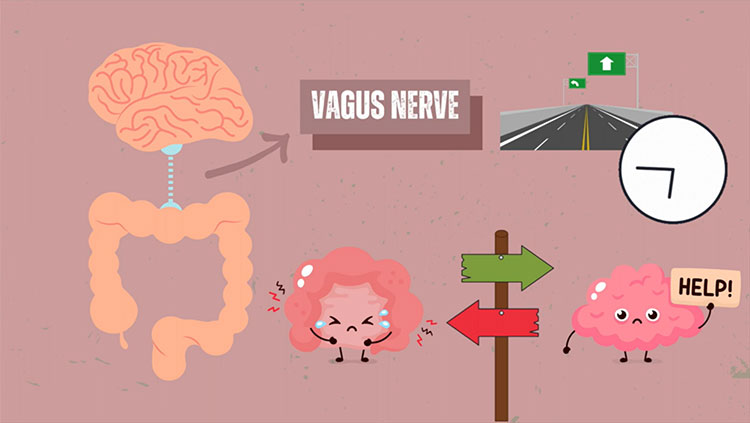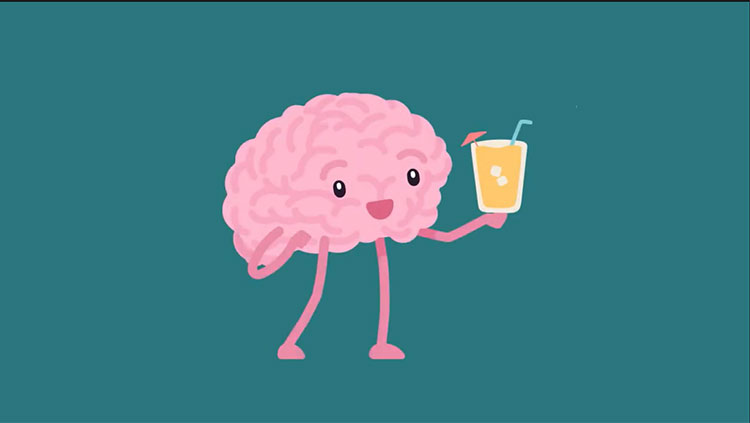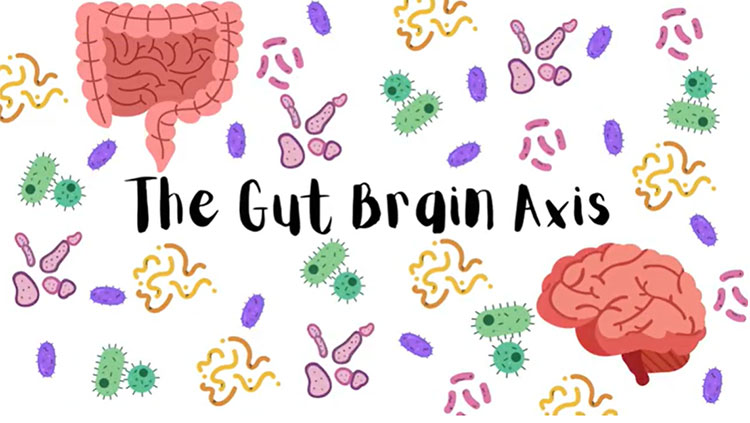The Body in Balance: Homeostasis
- Reviewed18 Oct 2022
- Author Diane A. Kelly
- Source BrainFacts/SfN

The cells of your body are immersed in a constantly changing environment. The nutrients that sustain them rise and fall with each meal. Gases, ions, and other solutes flow back and forth between your cells and blood. Chemicals bind to cells and trigger the building and release of proteins. Your cells digest food, get rid of waste, build new tissues, and destroy old cells. Environmental changes, both internal and external, ripple through your body’s physiological systems. One of your brain’s less-visible jobs is to cope with all these changes, keep them within a normal range, and maintain the healthy functions of your body.
The tendency of your body’s tissues and organ systems to maintain a condition of balance or equilibrium is called homeostasis. Homeostasis depends on active regulation, with dynamic adjustments that keep the environment of your cells and tissues relatively constant. The brain is part of many homeostatic systems, providing signals that coordinate your body’s internal clocks and regulating hormone secretion by the endocrine system. These functions often involve a region of the forebrain called the hypothalamus, a command center that regulates the activities of internal organs, among many other functions.
Adapted from the 8th edition of Brain Facts by Diane A. Kelly.
CONTENT PROVIDED BY
BrainFacts/SfN
References
Aguilera, G. (2011). HPA axis responsiveness to stress: Implications for healthy aging. Experimental Gerontology, 46(2-3), 90–95. https://doi.org/10.1016/j.exger.2010.08.023
Balkaya, M., Prinz, V., Custodis, F., Gertz, K., Kronenberg, G., Kroeber, J., Fink, K., Plehm, R., Gass, P., Laufs, U., & Endres, M. (2011). Stress worsens endothelial function and ischemic stroke via glucocorticoids. Stroke, 42(11), 3258–3264. https://pubmed.ncbi.nlm.nih.gov/21921276/
Carpenter, R., Reddi, B. 2012. Neurophysiology: A Conceptual Approach, Fifth Edition. Hodder Arnold: London.
Costello, R. B., Lentino, C. V., Boyd, C. C., O'Connell, M. L., Crawford, C. C., Sprengel, M. L., & Deuster, P. A. (2014). The effectiveness of melatonin for promoting healthy sleep: a rapid evidence assessment of the literature. Nutrition Journal, 13, 106. https://doi.org/10.1186/1475-2891-13-106
Debono, M., Ghobadi, C., Rostami-Hodjegan, A., Huatan, H., Campbell, M. J., Newell-Price, J., Darzy, K., Merke, D. P., Arlt, W., & Ross, R. J. (2009). Modified-Release Hydrocortisone to Provide Circadian Cortisol Profiles. The Journal of Clinical Endocrinology & Metabolism, 94(5), 1548–1554. https://doi.org/10.1210/jc.2008-2380
Dulac, C. (2010). Brain function and chromatin plasticity. Nature, 465(7299), 728–735. https://doi.org/10.1038/nature09231
Fain, G.L., & O’Dell, T. J. 2014. Molecular and Cellular Physiology of Neurons, Second Edition. Harvard University Press: Cambridge.
Gu, H. F., Tang, C. K., & Yang, Y. Z. (2012). Psychological stress, immune response, and atherosclerosis. Atherosclerosis, 223(1), 69–77. https://doi.org/10.1016/j.atherosclerosis.2012.01.021
Harris, A., & Seckl, J. (2011). Glucocorticoids, prenatal stress and the programming of disease. Hormones and Behavior, 59(3), 279–289. https://doi.org/10.1016/j.yhbeh.2010.06.007
Hasan, K. M., Rahman, M. S., Arif, K. M., & Sobhani, M. E. (2012). Psychological stress and aging: role of glucocorticoids (GCs). Age (Dordrecht, Netherlands), 34(6), 1421–1433. https://doi.org/10.1007/s11357-011-9319-0
Houben, T., Coomans, C. P., & Meijer, J. H. (2014). Regulation of Circadian and Acute Activity Levels by the Murine Suprachiasmatic Nuclei. PLOS ONE, 9(10), e110172. https://doi.org/10.1371/journal.pone.0110172
Klok, M. D., Jakobsdottir, S., Drent, M. L. (2007). The role of leptin and ghrelin in the regulation of food intake and body weight in humans: a review. Obesity Reviews, 8(1), 21–34. https://pubmed.ncbi.nlm.nih.gov/17212793/
Peschel, N., & Helfrich-Förster, C. (2011). Setting the clock – by nature: Circadian rhythm in the fruitfly Drosophila melanogaster. FEBS Letters, 585(10), 1435–1442. https://doi.org/10.1016/j.febslet.2011.02.028
Pfeffer, M., Korf, H. W., & Wicht, H. (2018). Synchronizing effects of melatonin on diurnal and circadian rhythms. General and Comparative Endocrinology, 258, 215–221. https://doi.org/10.1016/j.ygcen.2017.05.013
Purves, D. 2008. Neuroscience, Fourth Edition. Sinauer Associates, Inc.
Reynolds, R. M. (2013). Glucocorticoid excess and the developmental origins of disease: Two decades of testing the hypothesis – 2012 Curt Richter Award Winner. Psychoneuroendocrinology, 38(1), 1–11. https://doi.org/10.1016/j.psyneuen.2012.08.012
Richards, J., & Gumz, M. L. (2012). Advances in understanding the peripheral circadian clocks. The FASEB Journal, 26(9), 3602–3613. https://doi.org/10.1096/fj.12-203554
Skinner, M. K. (2014). Environmental stress and epigenetic transgenerational inheritance. BMC Medicine, 12, 153. https://doi.org/10.1186/s12916-014-0153-y
Sollars, P. J., & Pickard, G. E. (2015). The Neurobiology of Circadian Rhythms. Psychiatric Clinics of North America, 38(4), 645–665. https://doi.org/10.1016/j.psc.2015.07.003
Stojanovich L. (2010). Stress and autoimmunity. Autoimmunity Reviews, 9(5), A271–A276. https://doi.org/10.1016/j.autrev.2009.11.014
Swanson, L. W. 2012. Brain Architecture. 2nd edition. Oxford University Press: Oxford.
Tataroglu, O., & Emery, P. (2014). Studying circadian rhythms in Drosophila melanogaster. Methods, 68(1), 140–150. https://doi.org/10.1016/j.ymeth.2014.01.001
Tawakol, A., Ishai, A., Takx, R. A., Figueroa, A. L., Ali, A., Kaiser, Y., Truong, Q. A., Solomon, C. J., Calcagno, C., Mani, V., Tang, C. Y., Mulder, W. J., Murrough, J. W.,Hoffmann, U., Nahrendorf, M., Shin, L. M., Fayad, Z. A., & Pitman, R. K. (2017). Relation between resting amygdalar activity and cardiovascular events: a longitudinal and cohort study. The Lancet , 389(10071), 834–845. https://doi.org/10.1016/S0140-6736(16)31714-7
What to Read Next
Also In Body Systems
Trending
Popular articles on BrainFacts.org


















